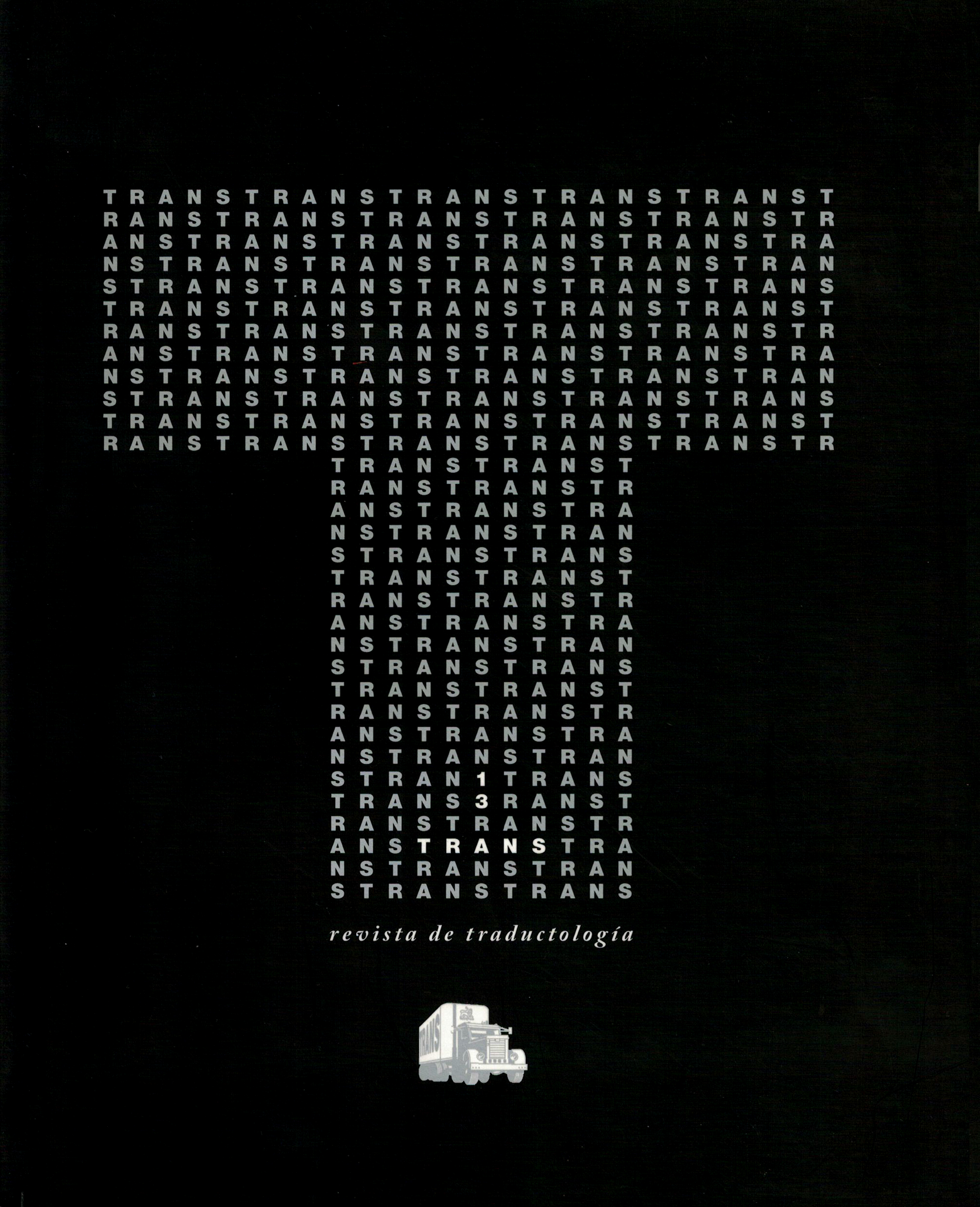Noni sosökokeror alolotoså asyl? Constructing Narratives of Heteroglossia in the Swedish Performances of Utvandrarna on the Finnish Stage
DOI:
https://doi.org/10.24310/TRANS.2009.v0i13.3159Keywords:
traducción teatral, sobretitulado, construcción de narraciones, heteroglosia y alternancia de códigos, polifonía en la representación escénica.Abstract
Nuestro lenguaje común es polifonía —afirma Martha Lavey (2004: xi)— aunque constantemente estamos buscando ese lenguaje común que perdimos cuando se derrumbó la Torre de Babel. El objeto de este estudio, la obra de teatro contemponáneo sueca Utvandrarna, confirma la cita anterior. En Utvandrarna la heteroglosia juega un papel muy importante en relación con una serie de narraciones que el público está invitado a construir en la representación. Cuando la obra se representaba en diferentes lugares de Finlandia, el sobretitulado se hizo necesario con mayor frecuencia que en las representaciones suecas (dirigidas a un público que hablaba sueco) para facilitar la comprensión del discurso y, por tanto, la construcción de las narraciones. El propósito del presente trabajo es estudiar el uso e importancia de la heteroglosia y de la alternancia de códigos, tanto en la caracterización (auditiva) como en la escenografía (visual) que conforman la experiencia teatral completa.
Downloads
Metrics
Publication Facts
Reviewer profiles N/A
Author statements
Indexed in
-
—
- Academic society
- N/A
- Publisher
- Universidad de Málaga
Downloads
Published
How to Cite
Issue
Section
License
All contents published in TRANS. Revista de Traductología are protected under the Creative Commons Attribution-NonCommercial-ShareAlike 4.0 International (CC BY-NC-SA 4.0) license. All about this license is available in the following link: <http://creativecommons.org/licenses/by-nc-sa/4.0>
Users can copy, use, redistribute, share and exhibit publicly as long as:
- The original source and authorship of the material are cited (Journal, Publisher and URL of the work).
- It is not used for comercial purposes.
- The existence of the license and its especifications are mentioned.
- ShareAlike — If you remix, transform, or build upon the material, you must distribute your contributions under the same license as the original.
There are two sets of authors’ rights: moral and property rights. Moral rights are perpetual prerogatives, unrenounceable, not-transferable, unalienable, imprescriptible and inembargable. According to authors’ rights legislation, TRANS. Revista de Traductología recognizes and respects authors moral rights, as well as the ownership of property rights, which will be transferred to University of Malaga in open access.
The property rights are referred to the benefits that are gained by the use or the dissemination of works. TRANS. Revista de Traductología is published in an open access form and it is exclusively licenced by any means for doing or authorising distribution, dissemination, reproduction, , adaptation, translation or arrangement of works.
Authors are responsable for obtaining the necessary permission to use copyrighted images.













21.png)
